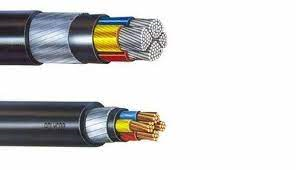LT & HT Cabling Services
Electrical cables are used to connect two or more devices for transfer of electrical signals or power from one device to the other. They are used for transmission of alternating and direct current. Electrical cables are extensively used in buildings for lighting and power.
Types of Electrical Cables:
Cables are named according to their formation, voltage capacity and the material used. They are also named according to their use, i.e., low tension or high-tension cables which is as per voltage and single core, two cores, three cores, etc.
Cables are classified in different ways on the basis of their uses, voltage and the type of insulation used for their construction.
- PVC (Polyvinyl Carbide Cable)
- PILCA (Paper Insulated Lead Covered Armoured Cable)
- XLPE (Cross-linked Poly Ethylene Cable)
Loose end cables should be properly sealed and end boxes installed. To maintain earth continuity of the cable a gland should be used at the cable end. We must apply M-seal to avoid water entry in the cable.
High Tension Cables:
A high-voltage cable (HV cable) is a cable used for electric power transmission at high voltage like 11kV, etc. This cable includes a conductor and insulation, and is suitable for being run underground or underwater.
Low Tension Cables:
These are used for transmitting voltages below 1 KV. Its construction is kept normal because the cable is not prone to any special electrostatic stress. Even the insulation for this cable is very simple in which a paper is impregnated using oil. The outer sheath layer keeps the cable protected from moisture and any environmental damage.
Methods of Cable Laying:
The various methods of cable lying are as follows:
- Laying cables directly into the ground
- Drawing the cables in ducts
- Laying cables on racks suspended from ceiling
- Laying cables on rack inside a cable tunnel
- Laying cables along buildings and structures









